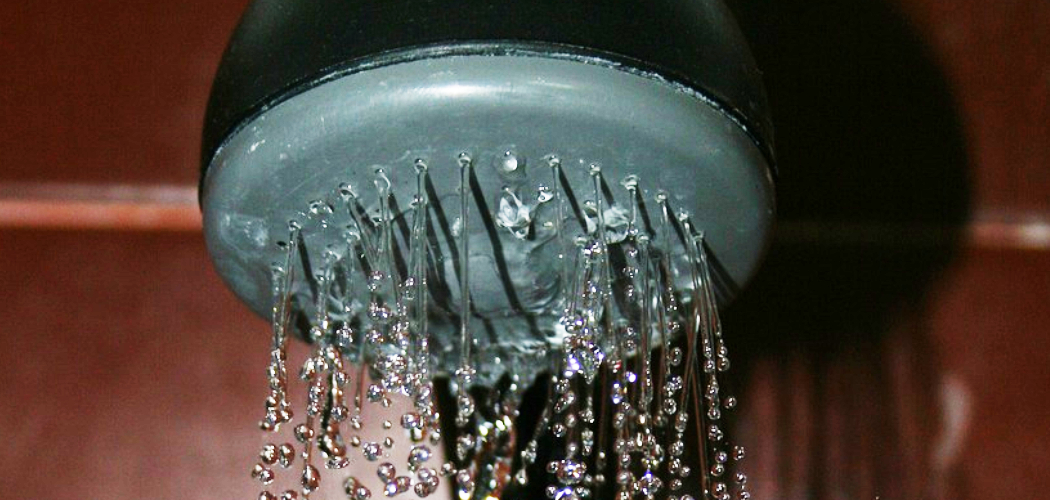If you’ve ever experienced the discomfort of high water pressure in your shower, you know how it can disrupt your daily routine. Excessive water pressure can result in an unpleasant, forceful spray that can make showering a less enjoyable experience.
Moreover, it can put a strain on your plumbing system and potentially lead to leaks or bursts. Fortunately, there are effective methods to decrease water pressure in your shower and restore a more comfortable flow. In this article, we will explore various techniques on how to decrease water pressure in shower, from adjusting the pressure regulator valve to installing a pressure-reducing valve.
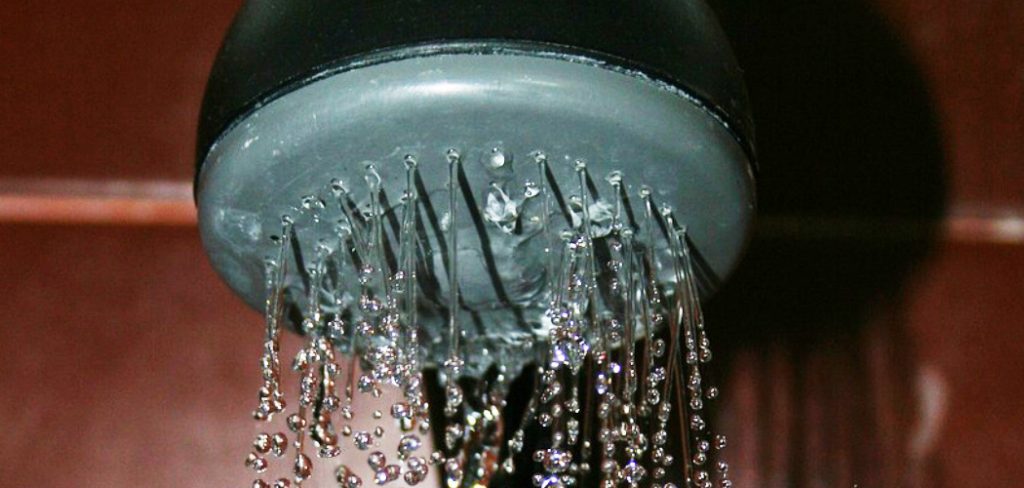
We will also discuss the importance of maintaining balanced water pressure throughout your home and how to ensure your shower remains a relaxing oasis. With the right knowledge and steps, you can regain control over your shower’s water pressure and create a more enjoyable bathing environment.
The Importance of Decreasing Water Pressure in Showers
Decreasing water pressure in the shower is one of the most important steps you can take to ensure a safe and comfortable bathing experience. In general, it’s best to keep water pressure low for both health and safety reasons. High-pressure showers can cause injury due to their powerful force, leading to falls or slips.
Over time, high water pressure can also damage the plumbing system and lead to costly repairs.
Reducing shower water pressure is essential for conserving energy as well. High-pressure showers waste significant amounts of water, which in turn necessitates higher energy costs associated with heating large quantities of water. Reducing shower pressure helps conserve both money and resources by reducing overall water consumption.
Finally, a lower-pressure shower can be safer and more comfortable for people with certain medical conditions or disabilities. Showering with low pressure makes it easier to regulate the temperature of the water, helping those with sensitive skin or limited mobility stay safe while bathing.
Low-pressure showers are also beneficial for those who suffer from respiratory illnesses, as steam from hot water can open airways and relieve congestion.
What Causes High Water Pressure in Shower?
High water pressure in showers is usually caused by the presence of a defective or malfunctioning component in either the shower valve or the pipes connected to it. This component may be a faulty pressure regulator, a worn-out washer, or something else entirely. In some cases, high water pressure can also be caused by the municipal water supply entering the house at too high of a pressure.
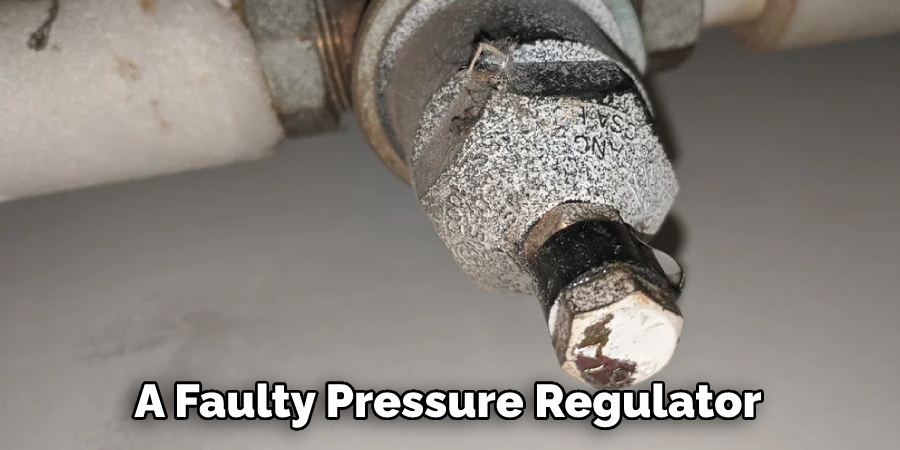
The most common way to check for this is to perform a simple test with an inexpensive water pressure gauge. Attach the gauge to any existing shower head or faucet and turn on the water. If the pressure reads higher than 60 psi, then you have a high-pressure situation that needs to be addressed.
High water pressure in showers can pose a serious safety hazard as it can cause damage to plumbing fixtures over time, lead to leaks, and cause potential water damage to the building. Making sure that the pressure in your shower is set right can prevent these issues and ensure a safe and comfortable experience for all users.
10 Methods How to Decrease Water Pressure in Shower
1. Adjust the Pressure Regulator Valve:
The pressure regulator valve is typically located near your home’s main water supply. By adjusting this valve, you can decrease the overall water pressure entering your plumbing system, including the shower.
Consult the manufacturer’s instructions or seek professional assistance to ensure proper adjustment. Although it may take some trial and error, you should be able to reduce the water pressure enough to make your shower more comfortable.
2. Install a Pressure-Reducing Valve:
If your home lacks a pressure regulator valve or if the existing one is ineffective, consider installing a pressure-reducing valve specifically for your shower. This valve will help regulate and decrease the water pressure in that specific area, providing a more comfortable shower experience.
Pressure-reducing valves can be found at most hardware stores and are easy to install. This could drastically reduce the water pressure in your shower, giving you a more enjoyable shower experience.
3. Clean or Replace the Showerhead:
Over time, mineral deposits and debris can clog the small openings in your showerhead, leading to reduced water flow and increased pressure. Remove the showerhead and soak it in a descaling solution or vinegar to dissolve the buildup. If cleaning doesn’t help, consider replacing the showerhead with a low-pressure model.
You can also adjust the flow rate on some showerheads by turning a knob or adjusting a lever. Many modern showerheads come with built-in water flow regulators that help to reduce water pressure. If you’re not sure which model is right for your shower, consult a professional plumber.
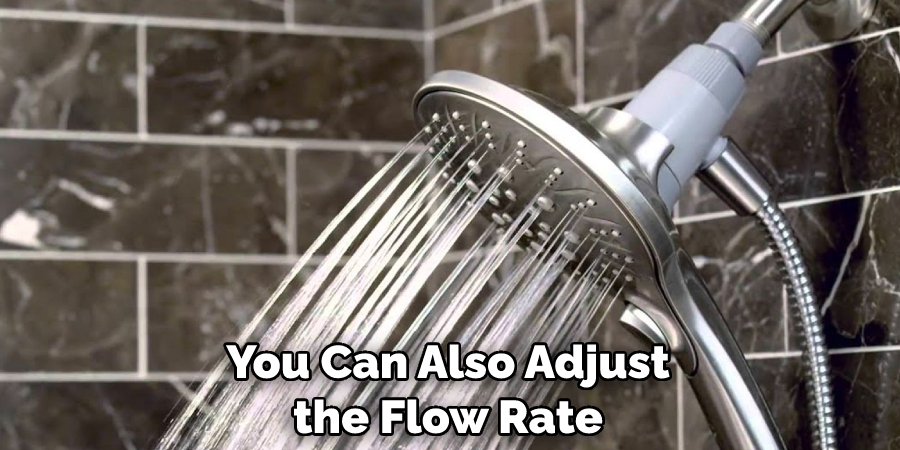
4. Use a Flow Restrictor:
Flow restrictors are small devices that limit the amount of water passing through the showerhead. They are easy to install and can significantly decrease water pressure while conserving water. Refer to the manufacturer’s instructions or consult a professional for proper installation.
To ensure that your showerhead is able to withstand the pressure, make sure it is rated for low-flow restrictors. This will help you get the most out of your water pressure reduction and reduce the amount of water you use overall. Make sure to use a flow restrictor that is compatible with your showerhead.
5. Check for Partially Closed Valves:
Ensure that all valves in your plumbing system, including the main shut-off valve, are fully open. Partially closed valves can restrict water flow, resulting in higher pressure. Take a moment to inspect and ensure all valves are fully open.
If you have difficulty opening the valves, use a wrench or pliers to give them an extra turn. When turning valves, it is important to do so slowly and carefully to prevent damaging the valve or pipes. If you have an older system, the valves may be corroded and need to be replaced.
6. Inspect Pressure Relief Valves:
Some homes have pressure relief valves installed on their water heaters or other plumbing fixtures. Check if these valves are functioning correctly and releasing excess pressure. If they are faulty or absent, consult a plumber to install or repair them.
Pressure relief valves are an important part of the overall plumbing system and ensure that your home does not experience sudden spikes in pressure. However, they can also be the cause of low water pressure in showers.
7. Install a Pressure Gauge:
A pressure gauge can help you monitor and measure the water pressure in your plumbing system accurately. By identifying the current pressure, you can make informed adjustments or seek professional assistance to decrease it to a more comfortable level.
When purchasing a pressure gauge, make sure it has adequate range and accuracy for your plumbing system. Install the gauge in-line so you can read the exact pressure being applied. Although the gauge should install easily, it is always best to seek advice from a qualified professional.
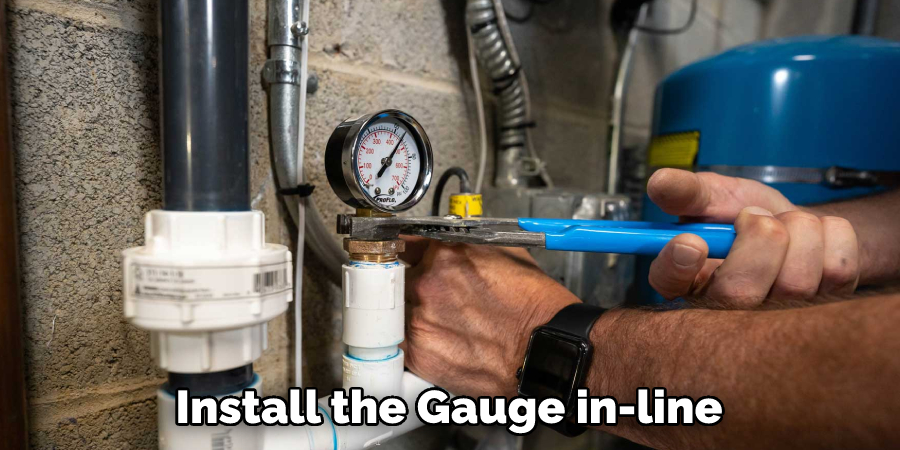
8. Consider a Water Pressure Regulator:
In addition to adjusting the pressure regulator valve, you can install individual water pressure regulators specifically for the shower. These devices allow you to control the pressure independently, ensuring a more personalized and comfortable shower experience.
Be sure to ask an experienced plumber for advice on the best type of pressure regulator for your household needs. While water pressure regulators are an effective solution, they can be expensive and time-consuming to install. Make sure you weigh the costs and benefits before deciding if this is the best solution for you.
9. Inspect for Pipe Obstructions:
Blockages or obstructions in the plumbing system can cause increased water pressure in specific areas, including the shower. Inspect the pipes for any signs of corrosion, debris, or mineral buildup. Clearing or replacing the affected pipes can help alleviate the pressure.
Although this is usually best left to a professional, DIYers may be able to do it in some situations. When removing a pipe obstruction, be sure to exercise caution and use the appropriate tools. Wear safety gear such as goggles and gloves, and use shutoff valves to turn off the main water supply.
10. Consult a Professional Plumber:
If you have exhausted all other methods or are unsure about making adjustments to your plumbing system, it’s advisable to consult a professional plumber. They have the expertise and tools to accurately diagnose the issue and recommend appropriate solutions tailored to your specific needs.
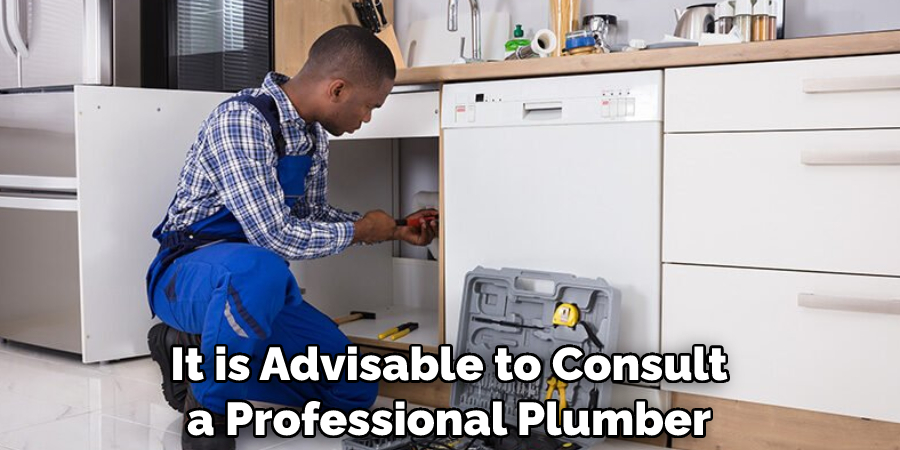
Conclusion
In conclusion, decreasing water pressure in the shower is a valuable home maintenance task that can ensure a healthy and cost-effective shower experience. When faced with high water pressure, replacing the shower valve or regulator is likely the best course of action.
Having a plumber come in and install the new valve or regulator can help save you time and money as they will know exactly what needs to be done.
Additionally, it may be possible to tweak the settings on an existing valve to achieve a more desirable water pressure without needing a replacement. Thanks for reading, and we hope this has given you some inspiration on how to decrease water pressure in shower!

